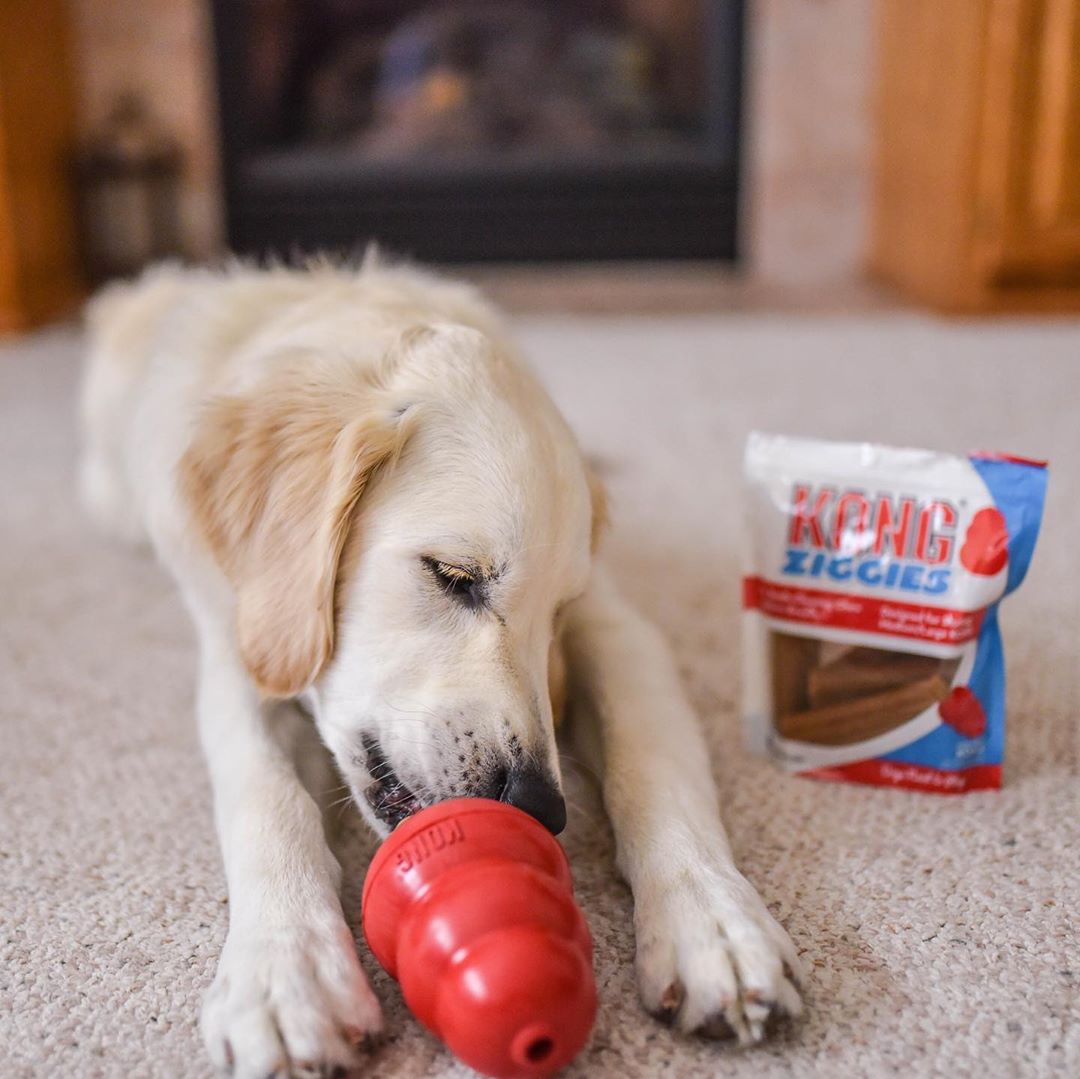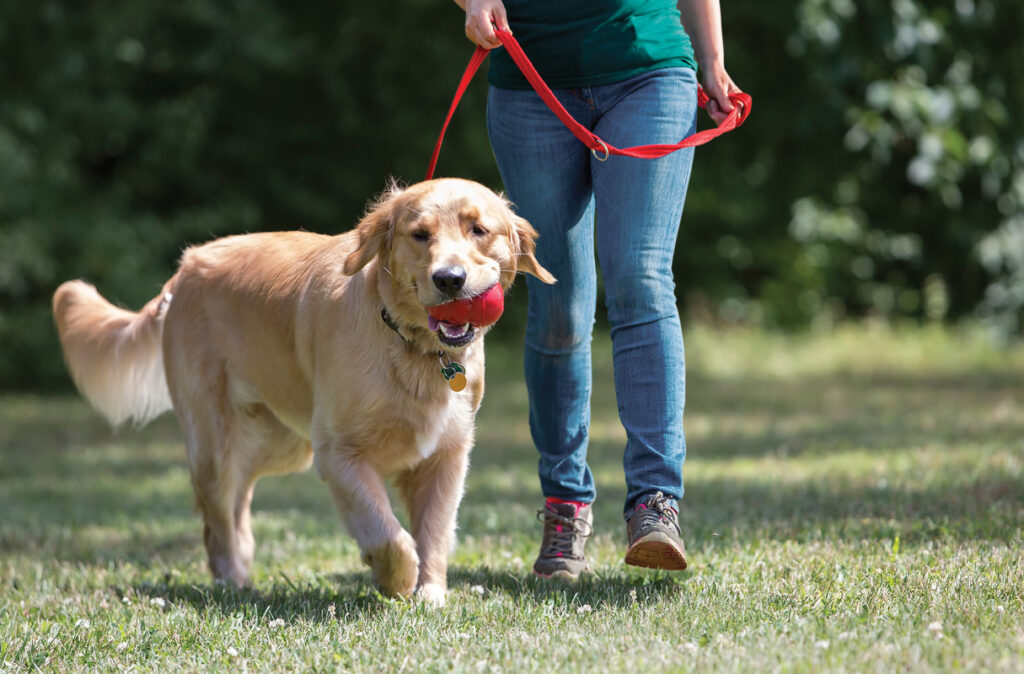Whether you’re rewarding your pooch for good behavior or you just want to give your best friend a little snack, dog treats are always good to have on hand. Of course, you don’t want to give them any old nosh. Just like you want to make sure that you’re feeding your dog the best food each and every day, the same logic applies to treats. Do you know what kind of treats are best for your four-legged friend? Let KONG Club help take the guesswork out of treat shopping 1:1 nutrition consultations, allowing you to do what you do best: play the day away with your pup!
Where Do Treats Fit Into a Dog’s Diet?
Treats are a great tool for rewarding and reinforcing your dog’s good behavior, so that could mean socialization, general training, or following instructions. Considering most dogs are chomping at the bit for a good treat, it’s likely that you’ll see success when you’re using this tasty form of positive reinforcement.
Of course, it’s all too easy to overdo it with treats at the same time, especially when Fido is giving you those irresistible puppy dog eyes. As a general rule of thumb, dogs should not receive more than 10 percent of their daily caloric intake from treats. If you’re not sure what that is, don’t hesitate to reach out to the 24/7 vet experts in your KONG Club app as different dogs have different needs. Obviously, a spunky pup is going to need more calories than a sedentary senior.
Using the 10 percent measure as a guide, the next trick is determining how you’re going to spread those treats out over a 24-hour period. Make a conscious effort each and every day to make sure that you’re not overdoing the extras as this could lead to finicky eating with your dog’s regular food (their main nutritional source) and/or weight gain.
Different Types of Dog Treats
The dog treat market is inundated with tons of options ranging in ingredients, purposes, textures, and so on. Not only are there different types of dog treats, but there are also different categories of treats. Let’s break it down:
Treat Categories
- Training Treats: These are generally small, lower-calorie treats that are meant to be used during the socialization and training process. The size makes it easier to control the calories because you’re not handing out huge biscuits every two minutes. This type of treat is also good to keep with you in your coat pocket when taking your pooch on a walk or to the dog park.
- General Treats: This type of dog treat is more substantial and should only be given out one to two times a day, ideally, between meals. General treats are good for everyday life.
- High-Value Treats: This special occasion treat is typically something out-of-the-box and of higher quality, such as a piece of liver, cheese, a bite of your steak, etc. Please note that high-value treats should be reserved for something like good behavior on an airplane, moving into a new house, etc. These are not to be a part of your dog’s daily diet!
Types of Treats
- Hard Treats: Hard, crunchy treats are a popular, everyday option but should be reserved for dogs who don’t have any dental issues. They come in a variety of shapes and sizes so you can choose the one that’s most appropriate for the size of your canine.
- Soft Treats: Soft treats can be advantageous during the training period because they can feel more like a real treat to a dog due to their agreeable taste and squishy texture. Just make sure that you keep the size small when training so they don’t overeat.
- Freeze-Dried and Jerky Treats: The good thing about these types of treats is that a dog can easily gnaw on one of these suckers for a while! Not only does that mean the calories are controlled (one portion versus several), but they’ll keep themselves occupied to boot. Dogs typically like these treats because they are closer in taste to human food — but a lot healthier for your hound than table scraps!
- Dental Treats: Is your dog’s doggie breath worse than the average pooch? Has your vet told you that tartar buildup is an issue? If you’re not brushing your dog’s teeth on a daily basis (you should be!), there are several dog treats on the market that are designed to help freshen breath and gently remove/control plaque and tartar conditions while still giving the little furball some tasty sustenance.
- Diet Treats: Calorie-controlled treats are best for a dog that needs to shed some pounds. Just remember that even though these nibbles are lower in calories, don’t exceed that 10 percent guideline. In fact, consider speaking to your vet to see if the amount should be lower depending on the current status of your dog. While you don’t want to deprive an overweight dog, you want to do the best you can to help them achieve a healthy weight.
How to Identify High-Quality Dog Treats
In a way, shopping for the best dog treats for your furry friend is a lot like shopping for yourself. You want to focus on quality. Here are some key elements and dog treat ingredients to look out for:
- Whole Food Ingredients: So, for example, that means grass-fed beef and not mechanically separated chicken. You also want to make sure that you understand what the ingredient is. If you can’t pronounce it, then your dog shouldn’t be eating it. The tricky part is when you see something listed that you can read, but is not a whole food — like animal fat, for instance. Animal fat is comprised of several things but you won’t know exactly what based on this general description.
- Natural Sweeteners: To be clear, added sugar in a dog’s diet isn’t great, but sometimes, it’s an appeasing taste for a pooch. Stay clear of sugars like corn syrup and opt for all-natural versions like apple sauce, molasses, and honey instead. Only serve up these sweet treats in moderation and definitely not every day.
- Natural or No Preservatives: Safe, natural preservatives to keep an eye out for are vitamins C and E. Any treats void of a preservative should be stored properly to avoid contamination so be sure to read the packaging for instructions.
- Added Nutrients: While you want the bulk of the nutrition to come from the aforementioned whole foods, fortified treats can be beneficial for dogs with special needs, such as seniors with sore joints, puppies that are building muscle tissue, overweight dogs on a reduced-calorie diet, etc.
- Organic Ingredients: We’re not suggesting that the healthiest dog treats are all organic, but it is more likely that they will be formulated with more pure, unadulterated ingredients than some other treats on the market.
Warning Signs for Low-Quality Treats
Marketing, marketing — don’t be fooled by low-quality treats disguised in fancy packaging. Keep an eye out for these undesirable dog treat ingredients.
- Artificial Preservatives: There are several, but some of the most popular ones on the market include calcium propionate, sodium nitrate, potassium sorbate, ethoxyquin, BHT, and BHA.
- Feed-Grade Ingredients: Sadly, almost all commercial dog food is made with ingredients that are considered lower-quality than human-grade food. Even more frightening is the fact that these mystery ingredients have concessions for toxins such as those produced by mold (mycotoxins.) So, when you see that a package of treats says it’s meat-flavored, it’s likely produced from meat by-products. Avoid this altogether by choosing treats only comprised of whole foods as listed above.
- Artificial Colors: Bright, glowing orange “turkey” treats? Your dog isn’t going to care about the color of the treat, but you should. Artificial colors contain many unnecessary and potentially unhealthy chemicals that you should avoid at all costs.
- Chemical Humectants: Watch out for those chewy treats. Some of them contain chemical humectants like propylene glycol to keep the product moist and chewy. The good news is that there are more natural humectants available that are sourced through food like molasses or vegetable glycerin, for example.
- Consult Your Vet: It’s always important to check with your dog’s vet to get advice on which treats would be best based on your dog’s age, breed, and current health.
KONG Club Treats
If you want to take the guesswork out of buying doggy snacks, work with the experts in your KONG Club app. Join the Club today!



